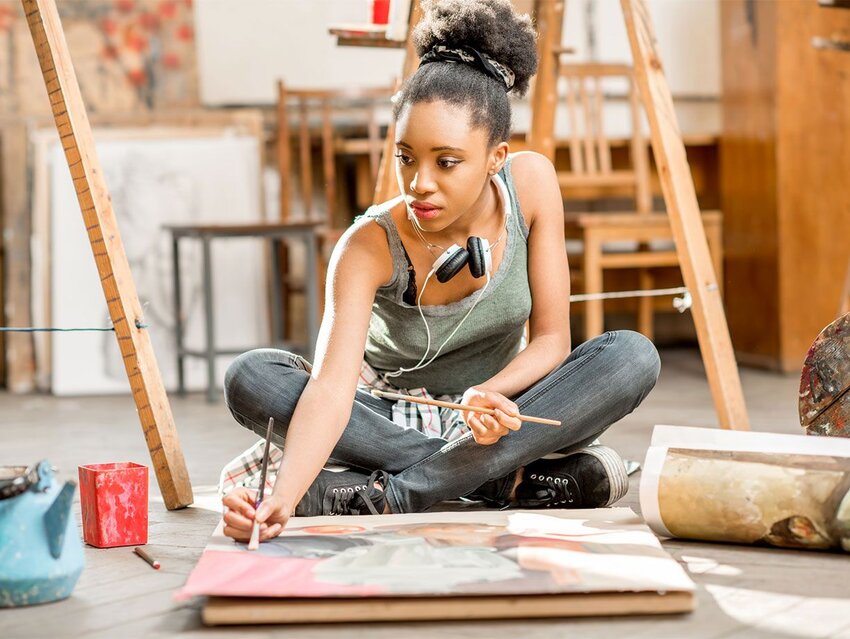Art class is usually considered the fun elective. Students can put away their textbooks and let their creativity shine. But that doesn’t mean learning isn’t taking place. There are new skills to master, and special vocabulary words to accompany each lesson. “Draw” comes from the Old English “dragan” — which sounds like a mythical creature (and might make sense given the content of children’s early fanciful drawings), but actually means “to pull.” It’s been used as an artistic term since the beginning of the 13th century and has since sprouted a new lexicon. Do you know the origins of these essential words from drawing class?
Chiaroscuro
This is the treatment of light and shade in a drawing or painting. It’s an Italian word that came from chiaro, meaning “clear” or “bright.” Leonardo da Vinci was the first great master of this technique, as seen in the 1481 painting “Adoration of the Magi.” By the mid-17th century, the term was widely used in Western art, especially in drawing and painting.
Hatching
This has nothing to do with chicken eggs — this type of “hatching” describes a shading technique that uses closely drawn parallel lines. It goes hand-in-hand with stippling, a process of using small dots (or specks) to create some sort of effect (especially shading).
Doodle
While “doodle” has popped up most recently as a canine mashup of almost any breed mixed with a poodle, it’s listed in the dictionary as both an artistic noun and verb. The definition of “doodle” is to scribble absentmindedly, something most drawing students do from time to time. (As a noun, it refers to the sketch produced by doodling.) “Doodle” has been around since the early 17th century, when it originally meant “a fool.” It comes from the Low German dudeldopp, which meant “simpleton,” but it translated to the art world in the 1930s to be used to refer to a simple drawing.
Sketch
Perhaps one step more advanced in artistic skill than the doodle, “sketch” comes from the Italian word for a drawing, schizzo. "Sketch" has been used since the mid-17th century to describe the initial drawing of a subject, often used to assist in creating a secondary, finished product.
Mahlstick
This handy device can work wonders for an artist when painting or drawing fine details. It’s a lightweight stick with a padded ball on one end that can be held against a piece of artwork to steady the brush or drawing hand. It comes from the Dutch maalstok (malen, “to paint,” and stok, “stick”).
Tooth
Some “normal” words take on new meaning in artistic contexts. In drawing, the “tooth” is essentially the surface texture of paper. The more tooth, the rougher the texture. Certain drawing mediums — charcoal, for example — need a rougher texture to adhere to the paper. Tooth also allows paint to bind to a surface.
Contrapposto
This word describes a human (often a model in an art class) who is posed asymmetrically, usually with their weight on one side so that their hips and shoulders are not parallel. This creates a much more interesting subject to draw. It’s an Italian word that ultimately comes from the Latin contraponere, or “to place against.”
Lay Figure
This small wooden mannequin is often used by artists as a model. Its name comes from the obsolete term “layman” — someone without professional knowledge in a particular subject.
Pochade
Executing a pochade incorporates a few other artistic terms. This is a quickly done sketch, usually while painting outside (en plein air). It’s typically very rough and meant to be a study (a piece of work done for practice, or as an experiment). It comes from the French pocher, which can mean “to sketch roughly” or “to poach an egg.” A pochade box helps artists paint en plein air by holding their canvas and painting or drawing supplies.
Featured image credit: RossHelen/ iStock

